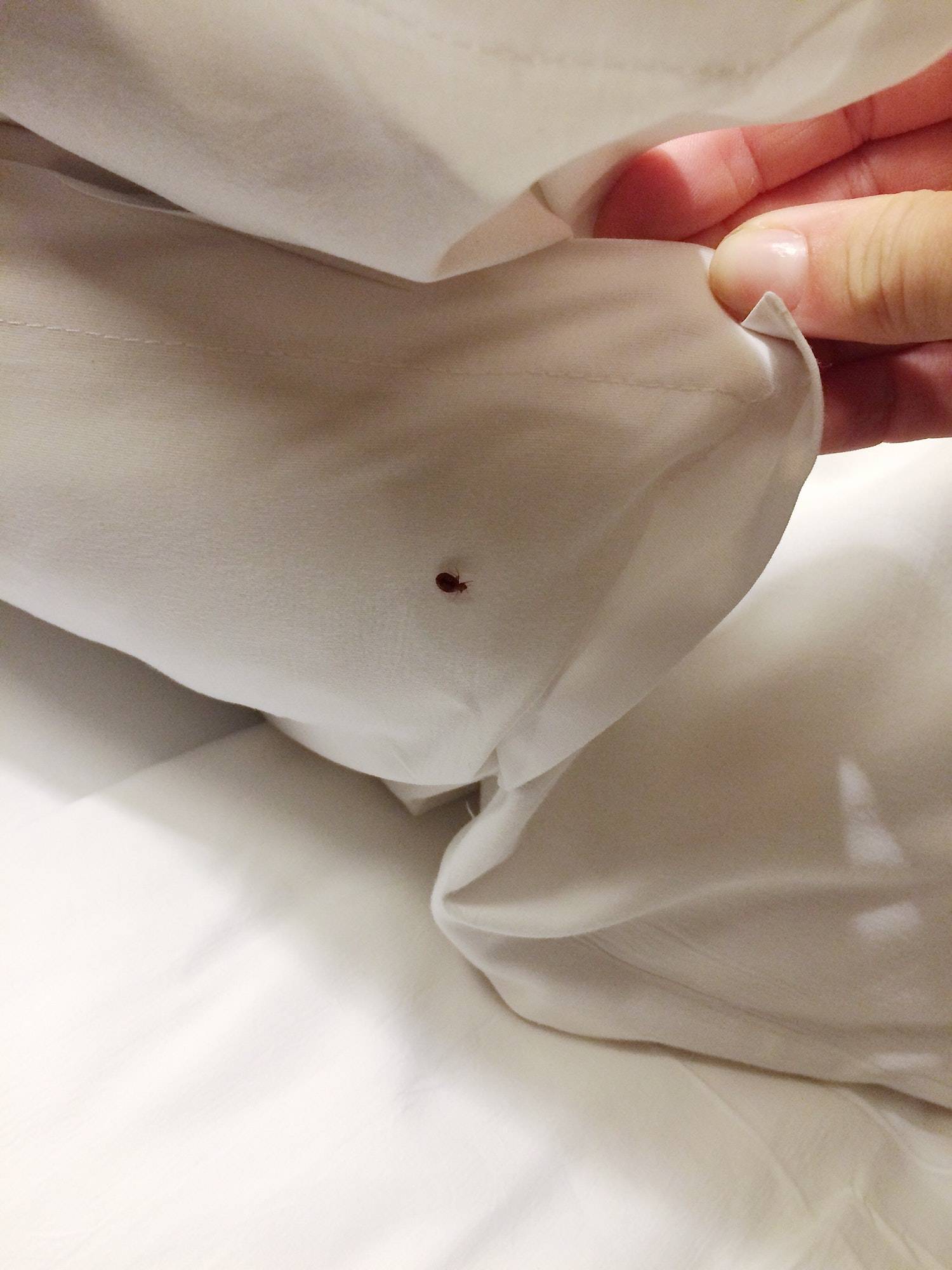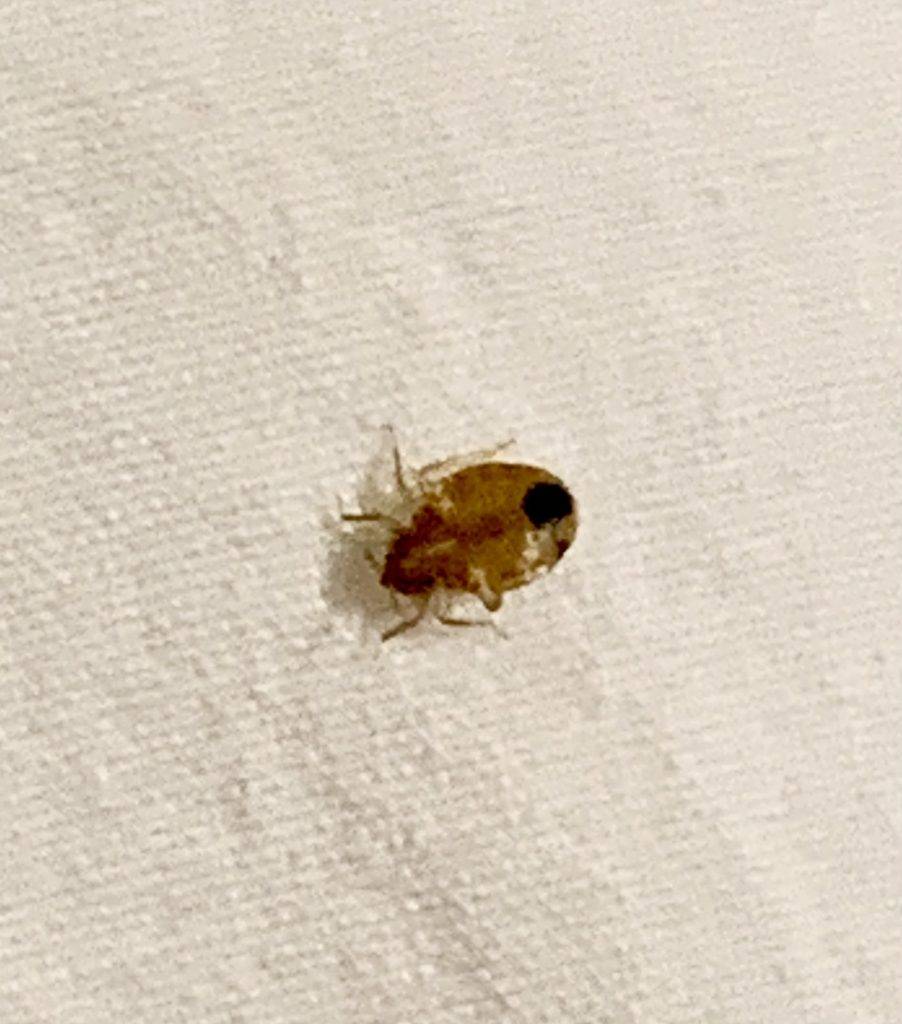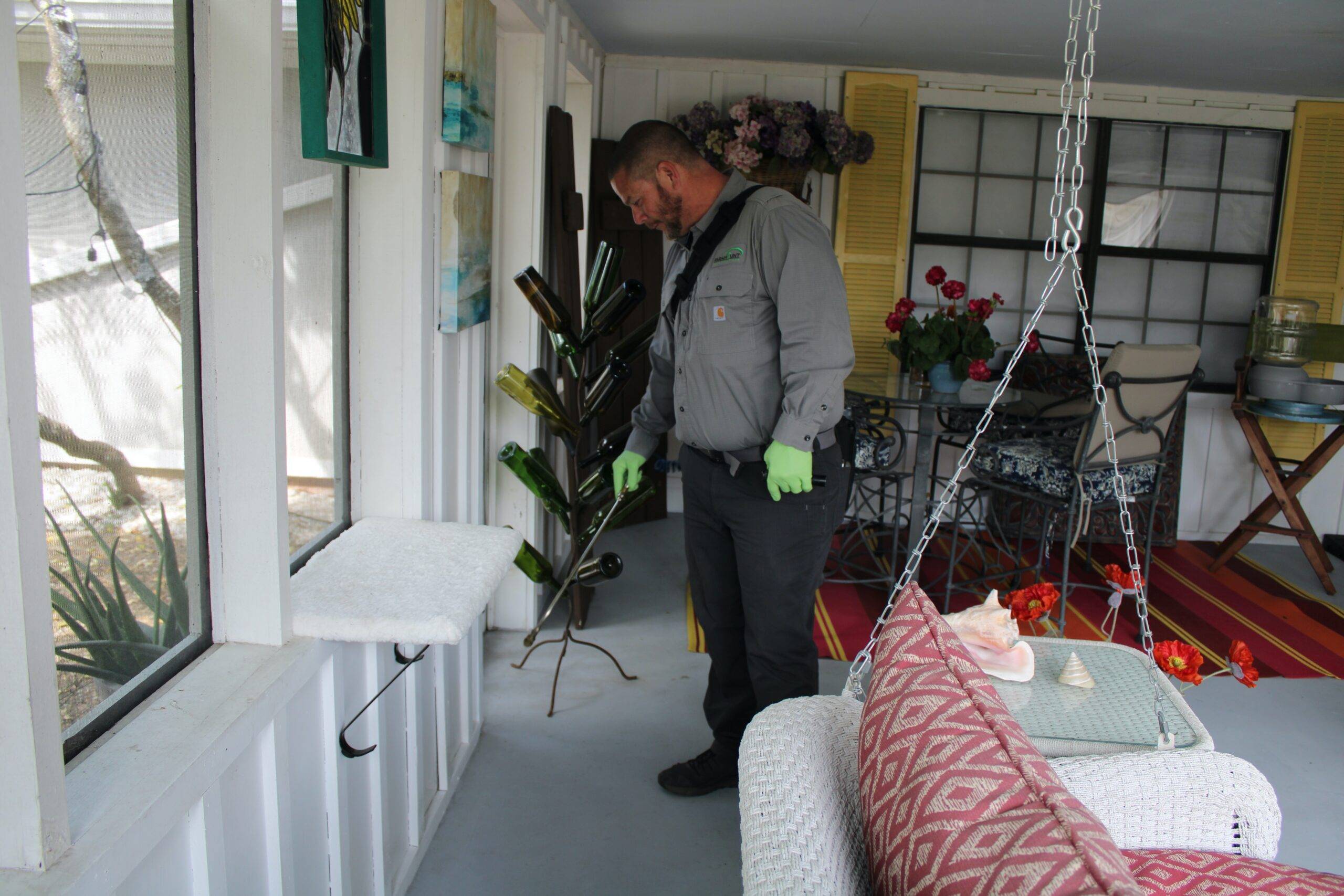In the vibrant communities of Biloxi, MS, bed bugs are unwelcome guests that can disrupt the comfort of homes and the operation of businesses. Paramount Pest Solutions brings you a comprehensive guide to identifying, eliminating, and preventing bed bugs, ensuring your space remains a sanctuary of peace and comfort. 🛌🚫
The Unseen Enemy: Identifying Bed Bugs🪲🔍
Bed bugs are among the most dreaded pests, not only for their bites but for their ability to remain hidden until they’ve firmly established themselves. Understanding how to spot these elusive pests is crucial in taking timely action to eliminate them. Here’s a closer look at the signs of a bed bug infestation and how to identify these tiny invaders.

Signs of an Infestation
- Bites on the Skin: One of the first signs of a bed bug infestation may be the appearance of bites. Bed bug bites often appear as small, red, itchy welts on the skin, typically on areas exposed during sleep. Unlike mosquito bites that are randomly placed, bed bug bites tend to follow a linear or clustered pattern due to the pests biting multiple times in close proximity.
- Stains on Bedding: Bed bugs leave behind evidence of their presence in the form of stains. As they feed, they can excrete small amounts of blood, leaving rust-colored or reddish stains on your sheets, pillowcases, and even mattresses. Additionally, their droppings can leave tiny dark spots that might bleed into the fabric like a marker would.
- Visible Bugs or Shells: Seeing the bed bugs themselves is a definitive sign of an infestation. Adult bed bugs are about the size of an apple seed, brownish in color, flat, and oval-shaped. After feeding, they may appear redder and more engorged. Bed bugs also shed their skins several times as they mature, leaving behind tiny, pale yellow shells. Bed bug eggs are minuscule, about 1mm in size, and pearl-white, often found in clusters within dark crevices or seams of mattresses and furniture.
Additional Indicators
- Musty Odor: A large bed bug infestation can produce a noticeable, musty scent similar to that of a wet towel. This odor comes from the bed bugs’ scent glands and can be quite pronounced in heavily infested areas.
- Unexplained Itchiness: Waking up with itchy spots that you did not have when you went to sleep may be a sign of bed bugs. Since not everyone reacts to bed bug bites, the absence of bites doesn’t necessarily mean bed bugs are not present.
- Live Bed Bugs in Other Areas: While bed bugs are commonly found near sleeping areas, they can also hide in furniture, behind wall hangings, between couch cushions, and in other secluded spots. Finding live bed bugs in these areas is a clear indication of an infestation.
Knowing how to identify bed bugs and recognizing the signs of their presence are the first steps toward addressing an infestation. Early detection is key to preventing bed bugs from spreading and establishing a larger colony, making eradication more challenging. Bed bugs hide really well. If you suspect you have bed bugs, taking swift action by following a structured plan or seeking professional help from pest control companies like Paramount can save you time, money, and stress in the long run.
Initial Steps: Preparing for Battle⚔️🛡️
Tackling a bed bug infestation is no small feat. Effective eradication requires not just treatment, but thorough preparation to ensure your efforts are as effective as possible. Let’s dive deeper into the preparatory steps that lay the groundwork for a successful battle against bed bugs.
1. Strip and Clean Bedding
Bed bugs and their eggs can hide in bedding, curtains, and clothes, making these items the first line of defense in your preparation.
- High Heat Washing: Bed bugs are vulnerable to temperature extremes. Washing your bedding, curtains, and any clothes that have been in the vicinity of the infestation in hot water will kill bed bugs at all stages of life. The water temperature should be at least 120°F (49°C) to ensure effectiveness.
- Drying on High Heat: After washing, dry these items on the highest heat setting available. The heat not only helps in killing any lingering bed bugs but also helps to eliminate eggs, which are often more resistant to other forms of treatment.
- Sealing Clean Items: Once cleaned and dried, seal these items in fresh plastic bags or containers to prevent re-infestation until the area has been successfully treated and cleared of bed bugs.
2. Vacuum Thoroughly
Vacuuming is a powerful tool in the removal of bed bugs and their debris from your environment.
- Comprehensive Vacuuming: It’s crucial to vacuum all areas, not just the bed. This includes the mattress, box spring, bed frame, headboard, furniture near the bed, carpets, and even small crevices in walls and floors. Bed bugs can hide in incredibly small spaces, so attention to detail is crucial.
- Immediate Disposal: After vacuuming, the vacuum bag should be immediately removed, sealed in a plastic bag, and disposed of in an outdoor trash container. This prevents any captured bed bugs from escaping back into your home.
3. Encase Mattresses and Pillows
Encasements are a key preventive measure to keep any surviving bed bugs from feeding and to prevent new ones from finding a home.
- Quality Encasements: Invest in high-quality bed bug-proof encasements for your mattress and pillows. These covers are designed with tightly woven fabric that bed bugs cannot penetrate or escape from.
- Long-term Protection: Once encased, any bed bugs trapped inside will eventually starve to death, a process that can take up to a year. Do not remove the encasements for at least a year to ensure all bed bugs inside are dead.
- Prevention of Future Infestations: Encasements also protect against future infestations by eliminating the cracks and crevices that bed bugs exploit to hide and breed.
The Battle Plan: Eradicating Bed Bugs🪲😵
Eradicating bed bugs from your home or business is not a simple task. It requires a well-thought-out strategy that combines different methods to effectively eliminate these resilient pests. Let’s break down the battle plan into actionable steps to reclaim your space from bed bugs.

1. Chemical Treatments
Chemical treatments can be an effective weapon against bed bugs, but they must be used judiciously to ensure safety and effectiveness.
- Insecticides: The market offers a range of EPA-approved bed bug sprays designed to kill these pests on contact. These may include pyrethrins, pyrethroids, desiccants, biopesticides, and insect growth regulators. Each product has specific application instructions that must be followed precisely to avoid harm to humans and pets and to ensure that the treatment is effective. It’s important to treat all affected areas, including hidden cracks and crevices.
- Desiccants: Desiccants work by drying out the bed bugs, leading to their death. Diatomaceous earth and silica gel are among the most common desiccants used in bed bug control. While slower acting than chemical sprays, desiccants have the advantage of remaining effective as long as they are present and dry. However, they must be applied thinly and evenly in areas where bed bugs are suspected to travel or hide, avoiding any areas where they could be inhaled by humans or pets.
2. Non-Chemical Methods
For those who prefer to avoid chemicals, there are non-chemical strategies that can also be highly effective in battling bed bugs.
- Heat Treatment: Bed bugs and their eggs cannot survive in temperatures above 120°F. Professional exterminators use specialized equipment to heat the entire infested area to a lethal temperature. This method has the advantage of reaching deep into hiding spots that are difficult to treat with sprays. Heat treatment requires specialized equipment and should be conducted by professionals to ensure safety and effectiveness.
- Freezing: Conversely, extreme cold can also kill bed bugs. Items that cannot be easily washed (e.g., books, shoes, delicate fabrics) can be placed in plastic bags and then into a freezer set at 0°F for at least four days. The key is to ensure that the items reach a uniformly cold temperature for a sufficient duration to kill all bed bugs and eggs.
3. Professional Help
In cases of severe infestation or when DIY methods have failed to eradicate the bed bugs, it’s time to call in the professionals.
- Expertise and Equipment: Pest control professionals have access to a wide range of tools and techniques, including more potent insecticides, comprehensive heat treatment setups, and even canine detection units to find hidden bed bugs. Their expertise allows for a more targeted and effective approach to bed bug eradication.
- Safety and Efficiency: A professional pest control service will ensure that treatments are conducted safely, minimizing risks to humans and pets. They can also offer a more efficient route to a bed bug-free environment, often resolving the problem more quickly than DIY methods alone.
Implementing Your Battle Plan
Eradicating bed bugs is a process that may require time and persistence. Start with thorough preparation, choose your treatment methods based on the severity of the infestation and your personal preferences, and consider enlisting professional help for the best chance of success. Remember, overcoming a bed bug infestation is not just about a single treatment; it’s about consistent, concerted efforts to eliminate these pests and prevent their return.
By following this battle plan, you equip yourself with the knowledge and strategies needed to tackle bed bug infestations head-on. Whether you opt for DIY methods or professional assistance, the goal is a pest-free living space where you can rest easy.
Aftermath: Preventing a Reinfestation🚫💪
Eradicating bed bugs is a significant victory, but the war isn’t over with just one battle. Ensuring these pests don’t make a comeback requires diligence, regular inspections, and adopting preventative habits. Here’s how to maintain a bed bug-free environment over the long term.
1. Regular Inspections
Vigilance is key to early detection, which can prevent a full-scale reinfestation.
- Routine Checks: Incorporate regular inspections of all sleeping areas into your cleaning routine. Use a flashlight to examine mattress seams, bed frames, headboards, and any furniture near the bed for signs of bed bugs or their droppings.
- After Travel: Bed bugs are notorious hitchhikers. After any trip, inspect your luggage and clothing before bringing them inside. Vacuum your suitcase and wash all clothes in hot water, regardless of whether they were worn.
- Second-Hand Items: Inspect second-hand furniture, mattresses, and clothing for bed bugs before bringing them into your home. A thorough cleaning and, if possible, a period of isolation can help ensure you’re not inadvertently inviting bed bugs inside.
2. Maintain a Clutter-Free Space
Reducing clutter eliminates bed bugs’ hiding places, making it harder for them to go undetected.
- Declutter Regularly: Keep your home organized and free of unnecessary items, especially around and under beds. The fewer places bed bugs have to hide, the less likely they are to establish a foothold.
- Regular Cleaning: Frequent vacuuming can remove any stray bed bugs before they have a chance to settle in. Pay special attention to floors, upholstered furniture, and baseboards.
3. Be Vigilant While Traveling
Hotels, regardless of their star rating, can be hotspots for bed bug activity. Taking precautions while traveling can significantly reduce the risk of bringing bed bugs home.
- Room Inspection: Upon arriving at a hotel, inspect the bed, headboard, and nearby furniture for signs of bed bugs. Look for live insects, rusty spots from their droppings, or small bloodstains on sheets.
- Protect Your Luggage: Keep your luggage on a luggage rack, away from the bed and walls. Consider using protective covers for suitcases and avoid placing any clothing or personal items on the bed.
- Post-Travel Protocol: When you return home, immediately launder all clothing from your trip and vacuum your luggage before storing it away.
Additional Tips for Bed Bug Prevention
- Educate Yourself and Others: Understanding how bed bugs spread and where they are most likely to be encountered can help you avoid them. Share this knowledge with family and friends to raise awareness.
- Professional Preventative Treatments: Consider occasional professional inspections or preventative treatments by Paramount Pest Solutions, especially if you live in an apartment complex where bed bugs can easily spread from one unit to another.
- Monitor Guest Items: Be cautious with guests’ belongings, as bed bugs can arrive via visitors’ bags or coats. Providing a designated area away from bedrooms for guests to place their items can help reduce this risk.
Following these steps can help ensure that your victory over bed bugs is a lasting one. Maintaining a proactive stance against these pests is the best way to prevent future infestations, keeping your home safe and comfortable for everyone who lives there.
Victory Over Bed Bugs: Your Guide to a Pest-Free Home
Battling bed bugs can seem daunting, but with the right strategy, victory is within reach. By following this step-by-step guide, you can eliminate these unwelcome guests and ensure they don’t return. Remember, the key to success lies in thoroughness and persistence. Whether you tackle the problem yourself or call in the experts, a bed bug-free environment is possible.

Reclaim Your Peace with Paramount Pest Solutions
Tired of losing sleep over bed bugs? Let Paramount Pest Solutions be your ally in the fight against these elusive pests. With our expertise and state-of-the-art treatment methods, we’ll help you reclaim the comfort and security of your home or business in Biloxi, MS. Don’t let bed bugs take over your space—contact us today for a comprehensive solution and enjoy the peace of mind that comes with a pest-free environment. 🌟
